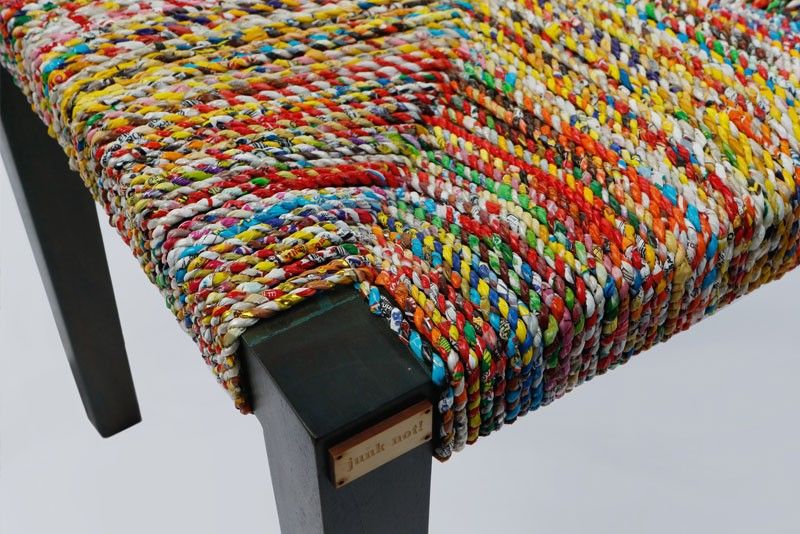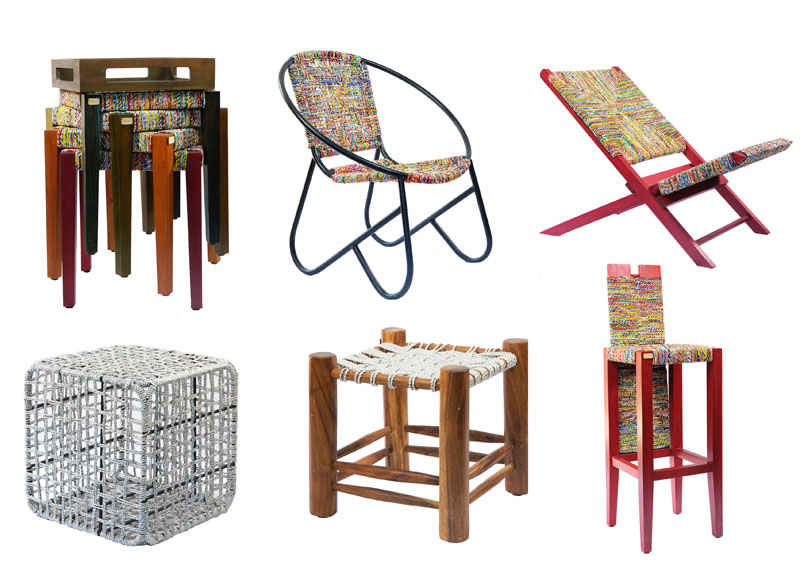Junk Not! Upcycling plastic into furniture

The global problem of plastic waste has reached crisis proportions.
Recent studies reveal that approximately 8 million tons of plastic are dumped into the world’s oceans every year, destroying marine biodiversity and causing significant environmental and economic damage across the globe.
The Philippines is at the center of the problem.
The nonprofit organization Ocean Conservancy revealed in a report last April that the Southeast Asian nation is among the top contributors of plastics dumped into the world’s oceans.
Along with China, Indonesia, Thailand and Vietnam, the five countries account for 55 to 60 percent of the total plastic waste that finds its way into oceans every year.
That’s more than the rest of the world combined.
According to Ocean Conservancy, the Philippines produces 2.7 million tons of plastic waste every year, with half a million tons believed to end up in the Pacific Ocean.
This problem has pushed activists such as interior designer Wilhelmina Garcia to look for creative solutions to lessen the impact of plastic waste on the environment.
Born into a family of environmental advocates in Manila, Garcia has long been active in conducting clean-up activities and community projects to teach locals how to properly manage waste.
As an interior designer, she has also been at the forefront of upcycling, or using discarded materials such as glass bottles and paper to produce furniture for her projects.
In 2011, she founded JunkNot Eco Creatives, a social enterprise that initially focused on producing bags and other accessories from plastic waste. She conducted training activities for communities, teaching them how to make these products.
While the idea sounded perfectly viable, Garcia says it often didn’t work.
“Many would not apply the skills that we taught them. Some would, but they would eventually give up,” she says.
“Not everyone has the patience and the tools to produce bags. There is also a limited market for such products,” she adds.
The experience was frustrating. For years, she tried different ways to address the growing plastic waste problem.
In 2013, she started what would become the centerpiece of JunkNot: turning plastic waste – primarily that used in packaging goods – into rope that she could use as material for designer chairs and other furniture.
It took a year, while she was on a study grant in Morocco, for her to perfect the process, which is done entirely by hand.
“It was difficult. But finally I felt that I found a viable solution,” she says.

Fast forward to the present. JunkNot has established itself in the Philippines as an innovative enterprise that offers a creative solution to the plastic waste problem.
Orders have started to come in, including from other countries where the furniture passed durability tests with flying colors.
JunkNot achieves more than just environmental advocacy, says Garcia. One of the enterprise’s goals is to support local communities.
In 2014, JunkNot partnered with the government to conduct a livelihood training program for residents of Alas-as village on the volcanic island of Taal, south of Manila.
Garcia taught the residents how to make rope out of discarded plastic packaging, purchased for 500 Philippine pesos (USD 10) per 90 meters. The ropemakers earn a percentage of the profits for every item of furniture that is sold.
“I want to pay them well,” she says. “I know how difficult it is to make rope. In the end, it’s not just about the cost of production, but also about helping locals and the environment.”
With thousands visiting the popular tourist destination every year, plastic waste has become a major problem for residents, according to Bonifacio Pangilinan, a local guide for tourists to the island.
Pangilinan says Garcia’s initiative gave hope to those who were alarmed by the situation.
A handful jumped at the opportunity to earn some money while at the same time helping to clean up their communities.
Among them was Pangilinan’s wife, Lorenza, who says the extra income enabled them to buy articles such as a solar panel to power their home, as there is no electricity on the island.
Over the years, the number of residents who make plastic rope has increased, reaching 60 as of last count.
More important, Pangilinan says their village has significantly lessened plastic waste as the locals have set up a system to collect it for the ropemakers.
Aside from the residents of Alas-as, Garcia also hired personnel in her workshop, in the city of Laguna, to do carpentry and weave rope for the furniture.
Garcia admits that her initiative is far from solving the world’s plastic waste problem.
While it has produced positive results for the community of Alas-as, she notes that this is just one of thousands of villages in the country that have a problem with plastic waste.
“We now have orders [for furniture], but not enough for us to expand into additional communities,” she says.
She notes that her designs need to be marketed to more people, which would create a need to upcycle more plastic waste.
What JunkNot offers is an alternative way to address the issue. But at the end of the day, says Garcia, there is only one viable solution for reducing plastic waste: use less plastic. http://junknot.ph/about/ Jan Victor R. Mateo (The Philippine Star)
- Latest
- Trending































